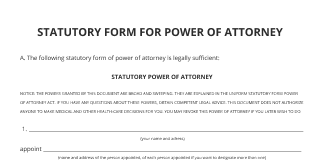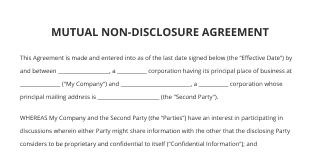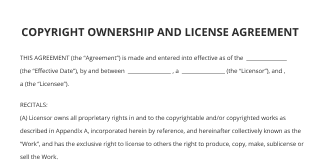Redline DNR Form with airSlate SignNow
Do more online with a globally-trusted eSignature platform
Standout signing experience
Robust reports and analytics
Mobile eSigning in person and remotely
Industry polices and compliance
Ossdistribution ontario ca, quicker than ever
Handy eSignature add-ons
See airSlate SignNow eSignatures in action
airSlate SignNow solutions for better efficiency
Our user reviews speak for themselves






Why choose airSlate SignNow
-
Free 7-day trial. Choose the plan you need and try it risk-free.
-
Honest pricing for full-featured plans. airSlate SignNow offers subscription plans with no overages or hidden fees at renewal.
-
Enterprise-grade security. airSlate SignNow helps you comply with global security standards.

Your step-by-step guide — ossdistribution ontario ca
Adopting airSlate SignNow’s eSignature any business can speed up signature workflows and eSign in real-time, providing an improved experience to clients and employees. Ossdistribution ontario ca in a couple of easy steps. Our mobile apps make working on the move achievable, even while off the internet! eSign documents from anywhere in the world and close up tasks in no time.
How to fill out and sign a ossdistribution ontario ca
- Log in to your airSlate SignNow profile.
- Find your needed form within your folders or upload a new one.
- Open up the document adjust using the Tools list.
- Place fillable boxes, type text and sign it.
- Include multiple signers via emails and set the signing sequence.
- Specify which recipients can get an signed copy.
- Use Advanced Options to restrict access to the document add an expiry date.
- Tap Save and Close when done.
In addition, there are more innovative capabilities available to ossdistribution ontario ca. List users to your shared work enviroment, view teams, and keep track of collaboration. Millions of people all over the US and Europe concur that a solution that brings people together in one cohesive enviroment, is what companies need to keep workflows performing easily. The airSlate SignNow REST API allows you to integrate eSignatures into your application, website, CRM or cloud. Try out airSlate SignNow and enjoy quicker, easier and overall more productive eSignature workflows!
How it works
airSlate SignNow features that users love
See exceptional results ossdistribution ontario ca
Get legally-binding signatures now!
FAQs ossdistribution ontario ca
-
How do I fill out a DNR form?
Filling out a DNR form electronically is simple with airSlate SignNow's high-volume eSignature features. With our solution, users can increase productivity with streamlined document workflows, impress customers with fast turnaround times, and save money while maximizing ROI. As a trusted electronic signature solution for businesses of all sizes, airSlate SignNow is here to help citizens with their own small and medium businesses, managers, and employees accountable for documents, to move fast with confidence. -
How do you write a DNR?
To write a do-not-resuscitate (DNR) order, follow these steps: 1. Start by clearly stating that the document is a DNR order. Use simple and straightforward language to ensure there is no confusion. 2. Include the patient's full name, date of birth, and any other identifying information necessary to accurately identify the individual. 3. Clearly state the patient's wishes regarding resuscitation. This could include specifying that they do not want any life-saving measures, including cardiopulmonary resuscitation (CPR) or the use of a ventilator. 4. It is important to include the date the DNR order was written and to ensure that it is signed by the patient or their legally authorized representative. By using airSlate SignNow as your electronic signature solution, you can streamline the process of creating, sending, and signing important documents like DNR orders. With airSlate SignNow's high-volume eSignature features, you can increase productivity by automating document workflows. This means less time spent on paperwork and more time dedicated to serving your customers and growing your business. Impress your customers with airSlate SignNow's professional and efficient electronic signature solution. By offering a seamless signing experience, you can demonstrate your commitment to modernizing your business processes and providing a top-notch customer experience. Not only does airSlate SignNow save you time and improve efficiency, but it also helps you save money while maximizing your return on investment. By eliminating the need for printing, mailing, and storing paper documents, airSlate SignNow reduces costs associated with paper-based processes. Additionally, airSlate SignNow's intuitive and user-friendly interface ensures that employees can easily navigate and utilize the platform, minimizing the need for extensive training. Whether you are a small business owner, manager, or employee responsible for handling important documents, airSlate SignNow is the perfect solution for you. Its customizable eSignature workflows cater to the unique needs of SMBs and mid-market businesses, making it a trusted and reliable choice. Trust in airSlate SignNow's expertise and enjoy the benefits of a seamless and efficient electronic signature solution for your business. -
Can a healthy person get a DNR?
airSlate SignNow is an innovative electronic signature solution that offers high-volume eSignature features for businesses of all sizes. With airSlate SignNow, you can create efficient document workflows that increase productivity and impress your customers. Best of all, you can save money while maximizing ROI with our customizable eSignature workflows. Whether you're a business owner, a manager, or an employee accountable for documents, airSlate SignNow is the perfect solution for fast and reliable electronic signing. -
How do you get a DNR bracelet?
airSlate SignNow is the perfect solution if you want to streamline your document workflow and increase productivity. With high-volume eSignature features, airSlate SignNow enables you to impress your customers and save money while maximizing ROI. Whether you're a small business owner or a manager accountable for documents, airSlate SignNow has everything you need to move fast and stay ahead of the competition. -
How do I get a DNR form?
Getting a DNR form is easy with airSlate SignNow's electronic signature solution. With high-volume eSignature features, users can streamline document workflows, impress customers, and save money. Whether you're a small business owner or a manager responsible for documents, airSlate SignNow maximizes ROI and ensures a fast and secure signing experience. Let airSlate SignNow help you stay productive and efficient with customizable eSignature workflows tailored to your needs. -
Where should a DNR be kept?
airSlate SignNow is an easy-to-use electronic signature solution perfect for businesses of all sizes. By using high-volume eSignature features, you can streamline document workflows, increase productivity and impress customers. With airSlate SignNow, you can save money and maximize ROI while ensuring accountability and compliance. Give your business a competitive edge and join the thousands of satisfied airSlate SignNow customers today! -
How long does a DNR last?
A DNR (Do Not Resuscitate) order typically lasts until a patient revokes or changes it or until they pass away. It is important for patients and their families to have open communication with their healthcare providers about their wishes regarding resuscitation efforts in order to ensure that their wishes are followed in an emergency situation. airSlate SignNow is the electronic signature solution that can take your document workflows to the next level and significantly increase productivity. With high-volume eSignature features, you can impress your customers while saving money and maximizing ROI. Whether you’re a small business owner or a manager responsible for documents, airSlate SignNow ensures that you can streamline your workflow and focus on growing your business. -
What makes DNR invalid?
airSlate SignNow is an electronic signature solution that provides high-volume eSignature features, allowing companies to streamline document workflows and increase productivity while saving money and maximizing ROI. With airSlate SignNow, users can impress customers with fast and secure document signing, while ensuring compliance with legal requirements. As a trusted partner to small/medium businesses, managers, and employees accountable for documents, airSlate SignNow enables fast, easy, and customizable workflows to help businesses succeed. -
Where do I get DNR forms?
You can obtain DNR forms by logging into your state's Department of Natural Resources website or by contacting your local hospital. However, if you want to streamline the process and increase productivity with fast and efficient document workflows, airSlate SignNow is the go-to solution. With airSlate SignNow, you can impress customers with a professional eSignature experience, save money, and maximize ROI with high-volume eSignature features. Join the many satisfied users who trust airSlate SignNow for their customizable eSignature solutions. -
How do I get a DNR form in Ontario?
To get a DNR form in Ontario, you can use an electronic signature solution like airSlate SignNow. With its high-volume eSignature features, users can streamline document workflows, impress customers, and save money while maximizing ROI. airSlate SignNow's expertise in customizable eSignature workflows ensures that citizens with small/medium businesses, managers, and employees accountable for documents can confidently handle their electronic signature needs with ease. -
What is a DNR in Ontario?
airSlate SignNow is an electronic signature solution that accelerates document workflows for companies looking to optimize their processes. With high-volume eSignature features, airSlate SignNow enables users to work faster and impress customers by sending and eSigning documents in just a few clicks. By saving time and resources, airSlate SignNow allows businesses to focus on growth while maximizing their ROI. airSlate SignNow is the perfect tool for small and medium businesses to streamline their document workflows and stay ahead of the competition.
What active users are saying — ossdistribution ontario ca
Frequently asked questions
How can I make documents so that someone else can electronically sign them?
How do you sign a PDF with your mouse?
How can I use my phone to sign a PDF?
Get more for ossdistribution ontario ca
- Email signature block Settlement Agreement Template
- Email signature block Day Care Contract Template
- Email signature block Consultant Invoice
- Email signed electronically Teacher Resignation Letter
- Email signed electronically Receipt Book
- Email email signature Conversion Rate Optimization Proposal Template
- Email email signature Wine Tasting Invitation
- Email electronically signing HVAC Proposal Template
- Email electronically signed Residential Lease Agreement Template
- Re-assign signature Employee of the Month Voting
- Re-assign countersign Annual Report Template – Foreign for Profit
- Customize digital signature Chicago Rental Lease Agreement
- Customize initial Small Business Partnership Agreement Template
- Customize initial Cancellation of Lease Agreement Template
- Customize byline House Rental Lease Agreement Template
- Fill electronic signature WordPress Web Design Proposal Template
- Fill signature Hotel Receipt Template
- Fill signature Non profit Business Proposal
- Fill sign form
- Fill sign Free California Room Rental Agreement Template
- Fill digi-sign HVAC Proposal Template
- Fill initial Photography Proposal Template
- Fill initial Event Catering Proposal Template
- Fill countersign Employee of the Month Voting
- Fill digital sign Pet Grooming Registration
- Fill signature service Invoice Template for Translation
- Fill electronically sign document
- Fill signatory HVAC Proposal Template












































